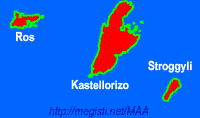Astrolabrium
 |
| (Click to Enlarge) |
When I first started my collection, my idea was getting as many different types of puzzles as I could without venturing into variations. I wanted to see and experience new concepts. However, as my collection rapidly grew to 1000+ puzzles my priorities changed, because it became increasingly harder to stick to that philosophy, and I began eyeing some nice variations to already known concepts. A good example of this is Siebenstein-Spiele's Astrolabrium, designed by Jürgen Reiche.
So far, I have four variations of this concept: the Marguerite, Blume Orange, Keep Smiling, and of course the Astrolabrium. There's at least another one that I don't own, which is the Sonnenblume. Curiously enough, all five puzzles above are either from Jean Claude Constantin or Jürgen Reiche - both are great German puzzle designers. Yes, the puzzles are basically the same, expect for the different presentation, but I'm a sucker for this type of puzzles. They seem pretty easy to understand, but are actually quite difficult to solve.
 |
| (Click to Enlarge) |
The Astrolabrium is made from two tones of laser-cut wood. Four discs, two light and two dark, are joined together by a central pin that allows them to rotate freely in 360º. Each disc has either five or six circles in the middle, and the goal is to find the correct orientation for each disc so that the black circles cover all white circles. I don't think it works the other way around, though - I tested it... The movement of the puzzle is smooth, but you have to rotate each disc carefully as to not accidentally move any of the other discs, since the pin is screwed rather tight.
 |
| (Click to Enlarge) - Backside |
Rated as a difficulty level 9/10, this puzzle promises some frustrating moments as you attempt to solve it...or not. Surprisingly, it only took me a couple of minutes to cover all white circles. Suspecting I was doing something wrong, I made a second attempt at solving it and even found a second solution not long after. However, at close inspection, you can see smaller circles at the edges of every disc. After seeing this detail, I started asking myself if I was expected to also cover these small white circles in addition to the bigger ones. The instructions that came with the puzzle certainly don't answer this question and I can't find any solution online that proves this suspicion. Further attempts accomplished nothing, so I'm not entirely sure if that's a part of the puzzle or just decoration. Whatever their function is, one thing that I can be sure of is that the puzzle looks stunning.
Closing Comments:
In the end, at least for me, it doesn't matter if you already know the concept of the puzzle or not, but if the puzzle is well built and looks nice. From the four variations I currently own, the Astrolabrium is my favorite, so it was totally worth getting it.
Availability: You can purchase a copy of the Astrolabrium at PuzzleMaster for $24 CAD. There are also many other interesting designs by Siebenstein-Spiele, so check them out.

































3 comments:
I got this puzzle from my Belgian in-laws for Christmas and solved it last night - you are supposed to cover all the white circles, even the little ones around the rim. Once I had a solution, I checked it against the slip of paper I'd been given and at first thought the same as you - that it didn't really explain anything, just gave you a diagram of each individual disc. But then I realised, it was showing you the *relative orientation* of each disc needed for the solution. Follow that, and you'll cover everything :)
I arrived to the full solution a bit differently, and in such a way that made me believe that it is intimately related with the year showing at the center (1753) and the very concept of the puzzle. More about it here: http://imgur.com/a/JPGxM#37
I had to look this up. I have solved it for the inner (large dots) and outer ring (small dots), but I was assuming that it had to be done for the outer tabs as well, as they are different, and covering a white tab with two dots on the lower circle part with a dark tab that is just a circle still leaves some white. There seems like there is a reason for the discrepancy in the tabs, but I have worked the snot out of this, and there are only limited moves that satisfy this for the tabs, and cannot come close to resolving the other dots. I assume the tabs are not in the equation then, but curious if I missing something.
Post a Comment